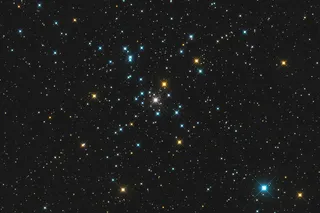The ancient Egyptians were astute astronomers. They often depicted the cosmos atop coffins. A new survey of such artwork suggests that they may have had a greater understanding of the Milky Way than previously thought, according to a study in The Journal of Astronomical History and Heritage.
The study focuses on how the Egyptian Sky Goddess Nut has been depicted in several settings over time. The goddess was often portrayed as a naked, star-covered woman arching over the Earth, often above the Earth god Geb. Nut’s legend has her consuming the sun at night and giving birth to it at dawn.
The study’s author, Or Graur, an astrophysics professor at the University of Portsmouth, England examined 125 images of Nut drawn from a list of 555 ancient Egyptian coffins. He was searching for both similarities and anomalies.
He found the most telling discrepancy on the outer coffin of Nesitaudjatakhet, a ...














